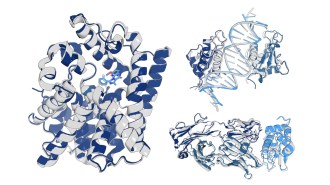- More than 2 years ago
Growing drug crystals on polymer surfaces could greatly improve a critical step in the development of pharmaceuticals, a new study suggests.
Many drug molecules can assume a variety of crystal structures, or polymorphs. Because polymorphs can differ in their ease of manufacture and in their medicinal properties, drug companies try to control crystal growth and discover new polymorphs (SN: 8/21/04, p. 122: http://www.sciencenews.org//articles/20040821/bob9.asp). However, there’s no simple chemical route to making varieties of polymorphs. Conventional methods, which typically involve varying the temperature of a crystallizing solution or changing solvents, take a lot of time and are hit-or-miss.
In the April 20 Journal of the American Chemical Society, Adam Matzger and his colleagues at the University of Michigan in Ann Arbor report that certain polymers can induce a drug to assume one crystal structure over another. The researchers created a library of 436 polymer films and crystallized a variety of drug-related molecules on the films.
To test the effectiveness of their strategy, the researchers tried it with a common pharmaceutical-industry chemical called ROY, which is famous for having six fully characterized polymorphs, more than any other molecule.
Various polymer films produced all six polymorphs. Using the same technique, the Michigan group discovered two previously unknown polymorphs of the antibiotic sulfamethoxazole.
Expanding the group’s polymer library is likely to yield even more polymorphs, predicts Matzger. For instance, most of the polymorphs in the experiment could be made on any of several members of the 436-polymer library, but one of the two new forms of sulfamethoxazole grew on only one polymer. “This indicates that we should be trying many more polymers,” Matzger says.






